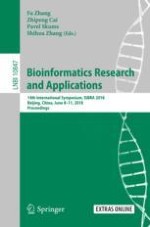2018 | Buch
Bioinformatics Research and Applications
14th International Symposium, ISBRA 2018, Beijing, China, June 8-11, 2018, Proceedings
herausgegeben von: Fa Zhang, Zhipeng Cai, Pavel Skums, Dr. Shihua Zhang
Verlag: Springer International Publishing
Buchreihe : Lecture Notes in Computer Science
